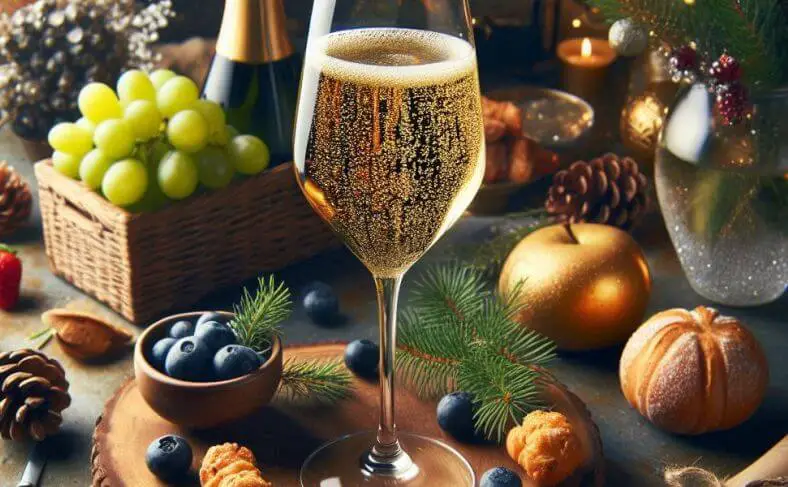Last updated on October 26th, 2025 at 06:45 pm
Uncork the sparkling wine and relish its bubbly effervescence. From Champagne to Prosecco and Cava, know the history and characteristics of these celebratory wines.
Pop the cork and let the bubbles flow! Sparkling wine is more than just a celebratory, fizzy drink; it’s a delightful journey through history, flavor, and craftsmanship.
Each sip tells a story, from the iconic Champagne of France to the vibrant Prosecco of Italy.
We have put together this piece to furnish you with the fundamental facts of sparkling wines so you can have more reasons for wine appreciation.
You might want to pin the image below.

What is Sparkling Wine?
Sparkling wine also called fizzy, bubbly, spumante, or effervescent wine is characterized by its effervescent, which is created through the presence of dissolved carbon dioxide (CO2) that forms bubbles.
Effervescent wines can vary widely in sweetness, flavor, and aroma, depending on the grape varieties used, the region, and the production techniques.
They are typically enjoyed as celebratory beverages, making them popular choices for toasts and special occasions, while also being versatile enough to pair with a variety of foods.
History of Sparkling Wine – Effervescent Wine
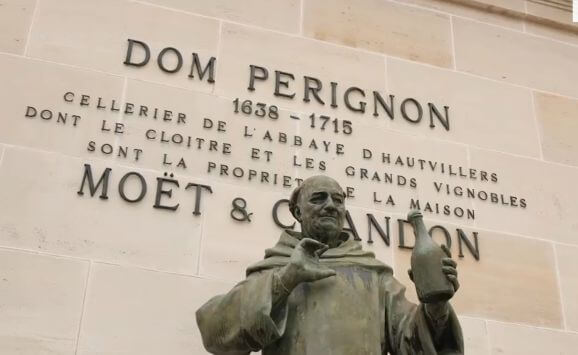
The history of effervescent wine is an interesting tale that stretches several centuries and regions, particularly France, England, Italy, and Spain.
These countries have preserved the winemaking craft from generation to generation and continue to innovate, serving the wine population their best.
While new wine regions have come up, these three are where the master’s stroke is.
Let’s take a brief tour of how each country contributed to this universal craft.
France: The Birthplace of Champagne – Champagne
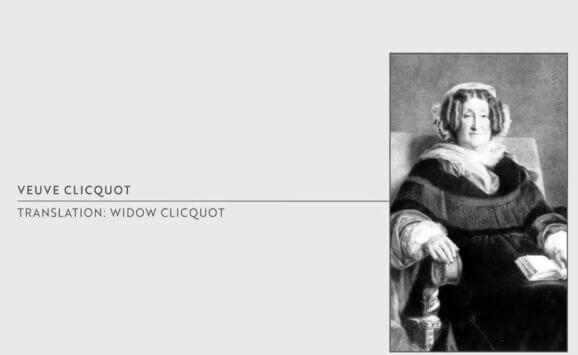
Sparkling wine’s origins can be traced back to the 1500s in France, where early wines were sometimes accidentally effervescent to the astonishment of the winemakers.
The Champagne region became synonymous with bubbly and fizzy wines, particularly after the 17th century.
Dom Pierre Pérignon, a Benedictine monk, is often credited with perfecting the crafting of Champagne, even though he was not comfortable with the fizzy bubbles that he tried to get rid of.
By the early 19th century, winemakers like Veuve Clicquot and Bollinger standardized winemaking techniques like controlled fermentation and riddling.
This technique entrenched Champagne’s status as a wine of prestige.
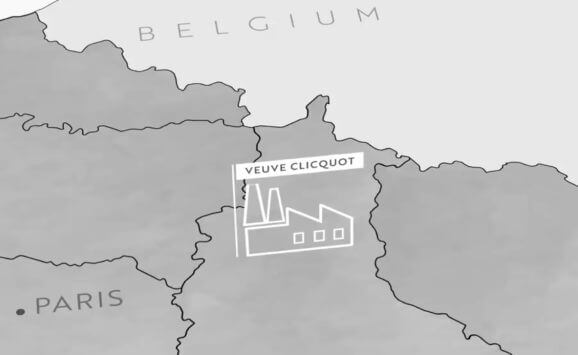
England: The Scientific Breakthrough
While France is celebrated for Champagne, England played a central role in the development of sparkling wines.
In 1662, English scientist Christopher Merret documented the process of adding sugar to wine, which induced a second fermentation and created bubbles.
This innovation, along with stronger glass bottles and cork stoppers, allowed for the successful transportation and production of sparkling wines in England, predating the French efforts.

Italy: A Diverse Tradition – Spumante
Known as spumante in Italy, the country boasts of a rich tradition of effervescent wine with notable varieties such as Prosecco, Franciacorta, and Asti.
Prosecco, primarily produced in the Veneto region, is known for its fresh and fruity profile.
Franciacorta, crafted using traditional methods, showcases the quality of Italian spumante.
Each region contributes unique styles, promoting Italy’s reputation and standing toe-to-toe in the spumante arena.
Spain: The Rise of Cava
Spain’s contribution to effervescent wine is expressed by Cava, which gained popularity in the late 19th century.
Produced mainly in Catalonia, Cava is made using traditional methods similar to Champagne.
Its affordability has made it a favorite among wine enthusiasts.
Today, this wine of bubbles is produced globally, with each region offering distinct styles and flavors.
The combined histories of France, England, Italy, and Spain highlight the evolution of effervescent wine, from a misunderstood beverage to a celebrated symbol of celebration and refinement.
Each country’s input has shaped the sparkling wine landscape, making it an enduring favorite among wine lovers worldwide.
More on wine regions around the world.
Related Posts
The Red Wines: Types and Characteristics
Characteristics of Sparkling Wine

Let’s take a closer look at some of the characteristics and traits peculiar to the bubbly wine:
Effervescent
The unmistakable characteristic of sparkling wine is its bubbles, which create a fizzy, lively and refreshing drinking experience.
This effervescent is achieved during a follow-up fermentation following the first, where CO2 is trapped in the bottle, leading to high pressure typically around 5 atmospheres (73.5 PSIA) that results in the signature fizz when opened.
Sweetness Levels
Another characteristic of the bubbly wine is the signature sweetness of effervescent wine varies widely, influenced by the amount of residual sugar also known as dosage, added after fermentation.
Common classifications of spumante sweetness include:
- Brut Nature: Very dry, with less than 3 grams of sugar per liter.
- Extra Brut: Less than 6 grams of sugar.
- Brut: Less than 12 grams of sugar.
- Demi-Sec: Sweeter, with up to 50 grams of sugar.
Grape Varieties
Another factor that identifies sparkling wines is the grape used. It can be made from various grape varieties, with Chardonnay, Pinot Noir, and Pinot Meunier at the forefront of Champagne production.
Each grape contributes unique flavors and aromas, resulting in the wine’s overall profile.
Color and Style
While the wines are predominantly white or rosé, they can also be produced as red sparkling wines, such as Lambrusco.
The color and style depend on the grape varieties used and the production techniques employed.
Aroma and Flavor Profile
The bubbles in sparkling wine expose the aroma and flavor experience, carrying fizzy scents to the nose with a delightful texture on the palate.
Effervescent wines can range from nutty and toasty in vintage Champagnes to bright and fruity in Prosecco.
Types of Sparkling Wine
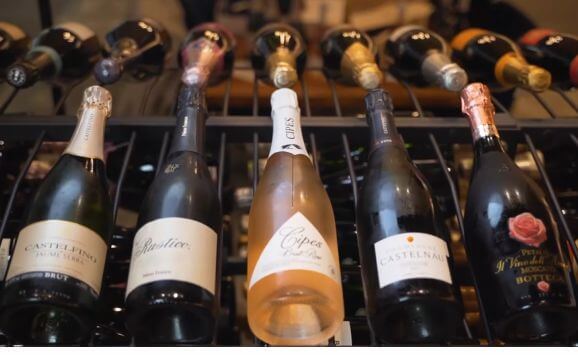
The following types of sparkling wine have unique production methods and provide a long stretch on the taste profile spectrum for enjoyment that caters to different preferences and celebrations.
Being familiar with the taste profile spectrum of spumante is essential for any enthusiast.
Let’s take a closer look at the most common types of effervescent wine:
Champagne
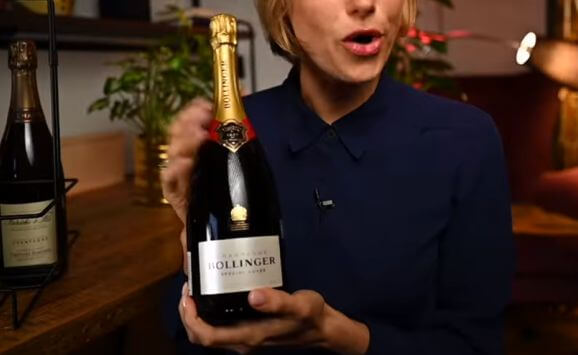
At the forefront is Champagne, the effervescent signature wine indigenous to the Champagne region of France.
This renowned wine undergoes a stringent production process known as the Méthode Champenoise or traditional method that involves a secondary fermentation in the bottle, a labor-intensive technique that contributes to Champagne’s complex flavors and fine bubbles.
The distinct taste of Champagne often includes notes of brioche, almond, and citrus, with an aging potential that allows it to develop greater depth over time.
Prosecco
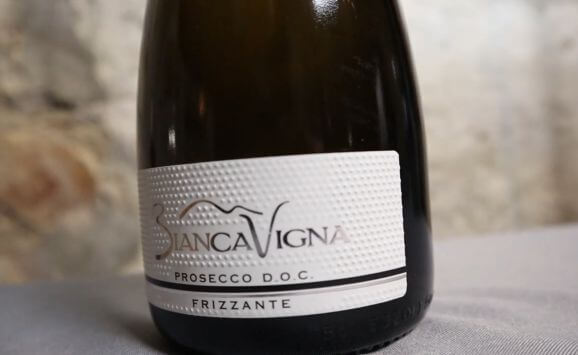
Next on the list is Prosecco, a spumante wine with its roots in Italy, specifically the Veneto region.
Unlike Champagne, Prosecco is produced using the Charmat method, where the secondary fermentation occurs in large stainless-steel tanks.
This process results in a lighter, fruitier wine, with flavors of green apple, pear, and floral notes.
Prosecco is typically enjoyed young and fresh, making it a popular choice for casual gatherings and celebrations.
Cava
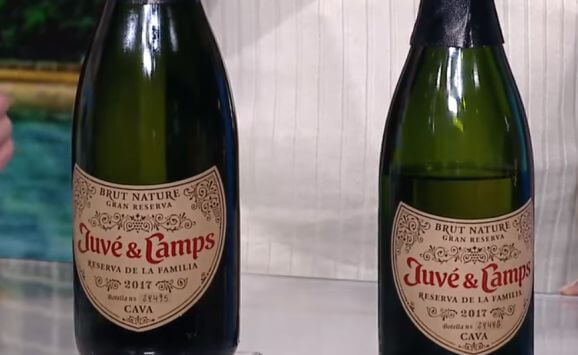
Spain’s input to the effervescent wine world is Cava, which is predominantly produced in the Penedès region.
Cava also utilizes the traditional method of production, similar to Champagne, but often at a more affordable price point.
The flavor profile of Cava can range from zesty citrus and green apple to richer notes of toast and nuts, depending on its aging.
This robustness makes Cava a favorite among bubbly wine lovers.
Asti
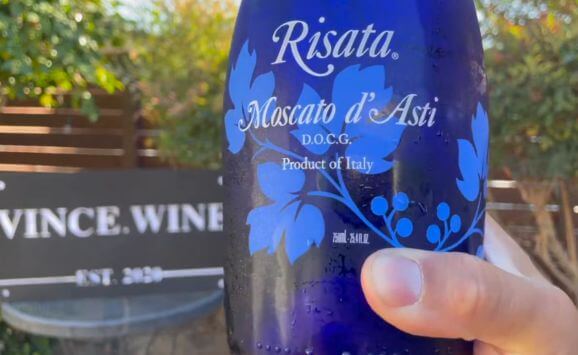
Other notable sparkling wines include Asti and Lambrusco. Asti, originating from Italy’s Piedmont region, is known for its sweet, fruity flavor, with peachy aromas and apricots, produced using the Charmat method.
Lambrusco
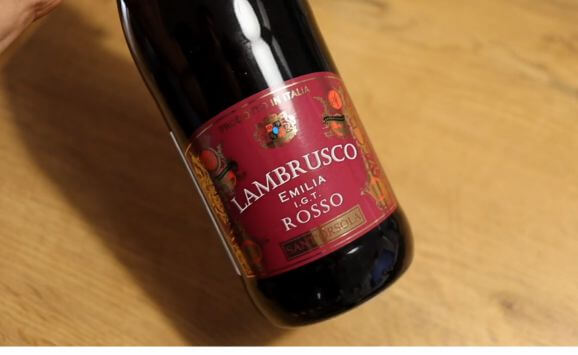
Lambrusco, also from Italy, is a sparkling red wine that offers a unique experience with its slightly sparkling nature and many flavor profiles, ranging from sweet to dry, often featuring berry and floral notes.
Methods Used in Making Sparkling Wines
Sparkling wine production is achieved through many methods as we have mentioned lightly above, each contributing unique characteristics to the final product.
The Traditional or Champagne Method
The traditional method, also known as the Champagne method, is one of the most revered and laborious techniques.
This process involves a secondary fermentation occurring within the bottle.
Initially, a base wine is produced and then bottled with a mixture of sugar and yeast, known as the liqueur de tirage.
The fermentation inside the bottle produces carbon dioxide, which is trapped, creating bubbles.
After aging, the bottles undergo riddling, a process of gradually tilting and rotating them to collect sediment in the neck.
The sediment is then removed through disgorgement, and the wine is topped off with a mixture called dosage before being sealed with a cork.
The Charmat Method or Tank Method
The Charmat or tank method, offers a more efficient alternative. In this process, the follow-up fermentation happens in large, pressurized stainless steel tanks instead of in singular bottles.
After the base wine is prepared, it is placed into the stainless tanks along with sugar and yeast.
The resulting carbon dioxide integrates into the wine, producing fizzy bubbles.
After fermentation, the wine is clarified to remove sediment and then cocked under pressure to preserve the carbonation.
This method is quicker and often used for Prosecco and other effervescent wines that are meant to be consumed young, promising fresher, and more fruit-forward flavors.

Transfer Method of Producing Effervescent Wines
The transfer method is a hybrid technique that combines elements of both the traditional and Charmat methods.
The follow-up or secondary fermentation begins in singular bottles, similar to the traditional method.
But, instead of riddling and disgorging each bottle, the wine is transferred to a large tank under pressure after the fermentation.
This allows for filtration and dosage adjustment before the wine is re-bottled.
This technique is labor-effective and reduces costs associated with riddling and disgorging while maintaining some of the original flavors developed during bottle fermentation.
The Carbonation Method of Making Sparkling Wines
The carbonation method of producing sparkling wine is by injecting carbon dioxide into the wine directly, much like how sodas are carbonated.
This is the simplest and cheapest method but has the downside of less complex and shorter-lived bubbles.
The method is often used for cheaper effervescent wines and can yield a product with less depth and character compared to those produced by other methods.
Serving Sparkling Wine
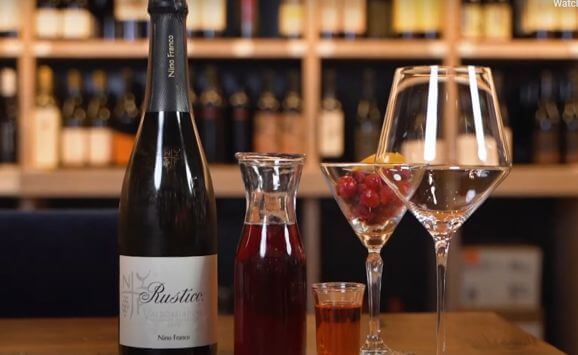
Serving effervescent wine correctly is important for releasing the full aroma and for the best experience.
The ideal temperature for serving the wine is between 45°F and 50°F (7°C to 10°C).
This temperature range preserves the wine’s carbonation while allowing its flavors and aromas to have a free day.
To achieve this, refrigerate the bottle for at least three hours or cool in an ice bucket for around 30 minutes before serving.
Sparkling Wine Glassware
Glassware also plays a crucial role in the effervescent wine experience.
Traditional flutes are popular for their elegant appearance and ability to retain bubbles, but tulip-shaped glasses are widely recommended by experts.
These glasses allow for better aeration and a more centralized aroma, promoting the tasting experience.
Pouring Sparkling Wines
Pouring sparkling wines correctly minimizes foam and maximizes fizziness and enjoyment.
Tilt the glass at a 45-degree angle and gently pour the wine, running it down the side of the glass, allowing the bubbles to settle gradually.
Fill the glass about two-thirds full to leave room for the aromas to hatch.
Pairing Sparkling Wines with Food
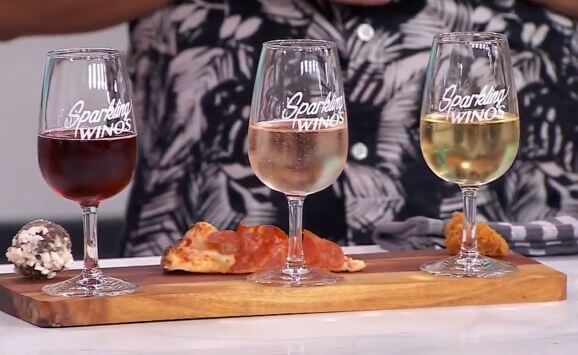
Pairing effervescent wine with food can elevate both the wine and the dish.
Seafoods such as oysters, shrimp, and sushi are classic pairings due to their briny flavors, which complement the wine’s crisp acidity.
Cheeses, especially soft varieties like Brie and Camembert, work well with effervescent wine, balancing its effervescent with its creamy texture.
For desserts, opt for light, fruity options like fresh berries or a citrus tart, which harmonize with the wine’s natural sweetness.
See more on the introduction to wine pairing.
Popularity of Sparkling Wines
The widespread popularity of bubbly wine can be attributed to its characteristics and association with celebration.
Whether marking a milestone event, toasting to a wedding, or simply enjoying a casual brunch, fizzy wine fits seamlessly into a variety of occasions.
Its ability to complement different types of cuisine, from seafood to desserts, further promotes its appeal.
Moreover, the aesthetic appeal of the bubbles, coupled with the elegant presentation of the bottles, has cemented effervescent wine as a symbol of luxury and festivity.
Sparkling Wine and Occasions
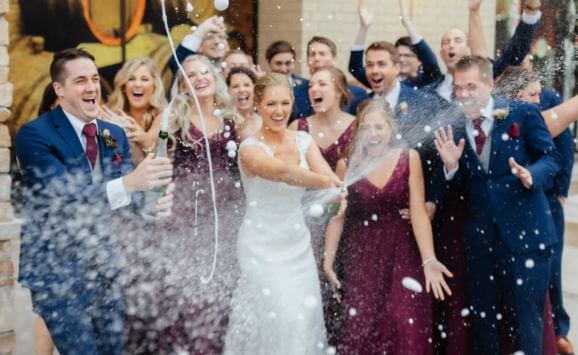
Bubbly wine is suitable for a variety of occasions. Its celebratory nature makes it ideal for formal events like weddings and anniversaries.
However, it is equally fitting for casual get-togethers, Sunday brunches, or as an aperitif before a meal.
The effervescent and lively character of the wine can enhance the ambiance, making any event feel more special and festive.
Making a Choice and Buying Effervescent Wine
When purchasing effervescent wine, several factors should be considered to ensure you make a well-informed choice.
Here are some of the factors you should consider when buying your type:
Price
Firstly, price is a significant determinant of quality. While premium sparkling wines such as Champagne, Prosecco, and Cava can be more costly, there are many high-quality options available at various price points.
It’s essential to set a budget and understand that higher prices often reflect better production methods and aging processes.
Region of Origin
Another critical factor is the region of origin. Bubbly wines from renowned regions like Champagne in France, Veneto in Italy, and Catalonia in Spain often exhibit unique characteristics that reflect their terroir.
Familiarizing yourself with these regions can help you select a wine that matches your taste preferences.
Grape Varieties
Additionally, grape varietals play a crucial role in the flavor profile of the wine.
Common varietals include Chardonnay, Pinot Noir, and Pinot Meunier, each bringing distinct notes and textures to the wine.
Sparkling Wine Storage
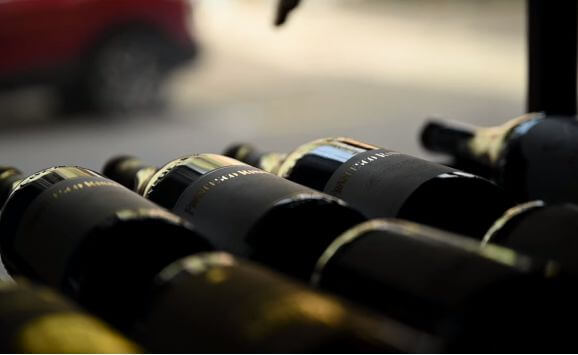
Once you have selected your fizzy wine, proper storage is vital to preserving its quality and flavor.
Proper storage is essential, whether you plan to enjoy your wine soon or age it for a special occasion.
By paying attention to these storage guidelines, you can ensure that your effervescent wine retains its fizziness, flavor, and overall quality.
It should be stored in a cool, dark place with a consistent temperature, ideally between 45-65°F (7-18°C).
Temperature fluctuations can cause premature aging and spoilage.
Humidity levels should be maintained around 70%, as excessive dryness or moisture can damage the cork, leading to oxidation or leakage.
Light exposure is another critical factor to consider. This wine is sensitive to light, which can degrade the wine and alter its taste.
Therefore, it’s best to store bottles away from direct sunlight and artificial light sources.
For long-term aging, storing bottles horizontally can keep the cork moist, preventing air from entering and ensuring the wine remains in optimal condition.
The Gentleman and Sparkling Wine
Gentlemen and sparkling wine share a timeless connection, often symbolizing celebration, sophistication, and style.
Whether at formal events or casual gatherings, a well-chosen bubbly wine warms the atmosphere.
The effervescence of Champagne, the vibrant notes of Prosecco, or the rich character of Cava can enhance any occasion.
A true gentleman appreciates the warmth of these wines, understanding their history and production methods.
From the perfect toast to a refined dinner pairing, sparkling wine reflects elegance and taste, making it a quintessential choice for those who value quality and tradition in their social experiences.
Cheers to the art of celebration!
Frequently Asked Questions
What are the characteristics of sparkling wines?
Effervescent wines are characterized by bubbles under pressure from carbon dioxide, resulting from secondary fermentation.
What is sparkling wine and how was it made?
Spumante wine is a bubbly wine made through fermentation, where carbon dioxide is trapped, creating effervescent. It can be produced using various methods.
How many types of sparkling wine are there?
There are several types of effervescent wine, including Champagne, Prosecco, Cava, Asti, and Lambrusco, each with unique production methods and flavor profiles.
How is sparkling wine made step by step?
It is made through a multi-step process: creating a base wine, inducing secondary fermentation, aging, riddling, and finally, disgorging and corking the wine.
Final Word from Gentsways
Sparkling wine, also called spumante or effervescent wine boasts a rich history and diverse types, captivating wine enthusiasts worldwide.
Its journey from royal courts to modern tables highlights its timeless appeal.
Varieties like Champagne, Prosecco, and Cava cater to every palate.
Beyond celebratory toasts, the wine promotes everyday moments and pairs well with various dishes, making it suitable for any occasion, from brunch to formal dinners.
Its versatility and charm bring joy to both ordinary and special moments, inviting continued exploration of this effervescent delight.
Citations:
- https://cosmevins.com/caracteristicas-vinos-espumosos/?lang=en
- https://www.firstleaf.com/wine-school/article/what-is-sparkling-wine
- https://www.wienscellars.com/sparkling-wines-how-theyre-made-and-when-to-serve-them/
- https://www.thewinestalker.net/2014/10/bubblybio1.html
- https://glenbosch.com.au/news/wine-and-spirits/a-brief-history-of-champagne-sparkling-wine/
Pyo Merez is a men’s lifestyle enthusiast and writer about the gentleman’s place and impact on society. Raised by a distinguished gentleman dad, he offers unique insights into how the mind of a gentleman works and how societal norms shape gentlemen’s identity and vice versa.
Through his insightful articles, Pyo taps into the depths of gentleman culture to provide perspectives on etiquette and manners in modern society.

